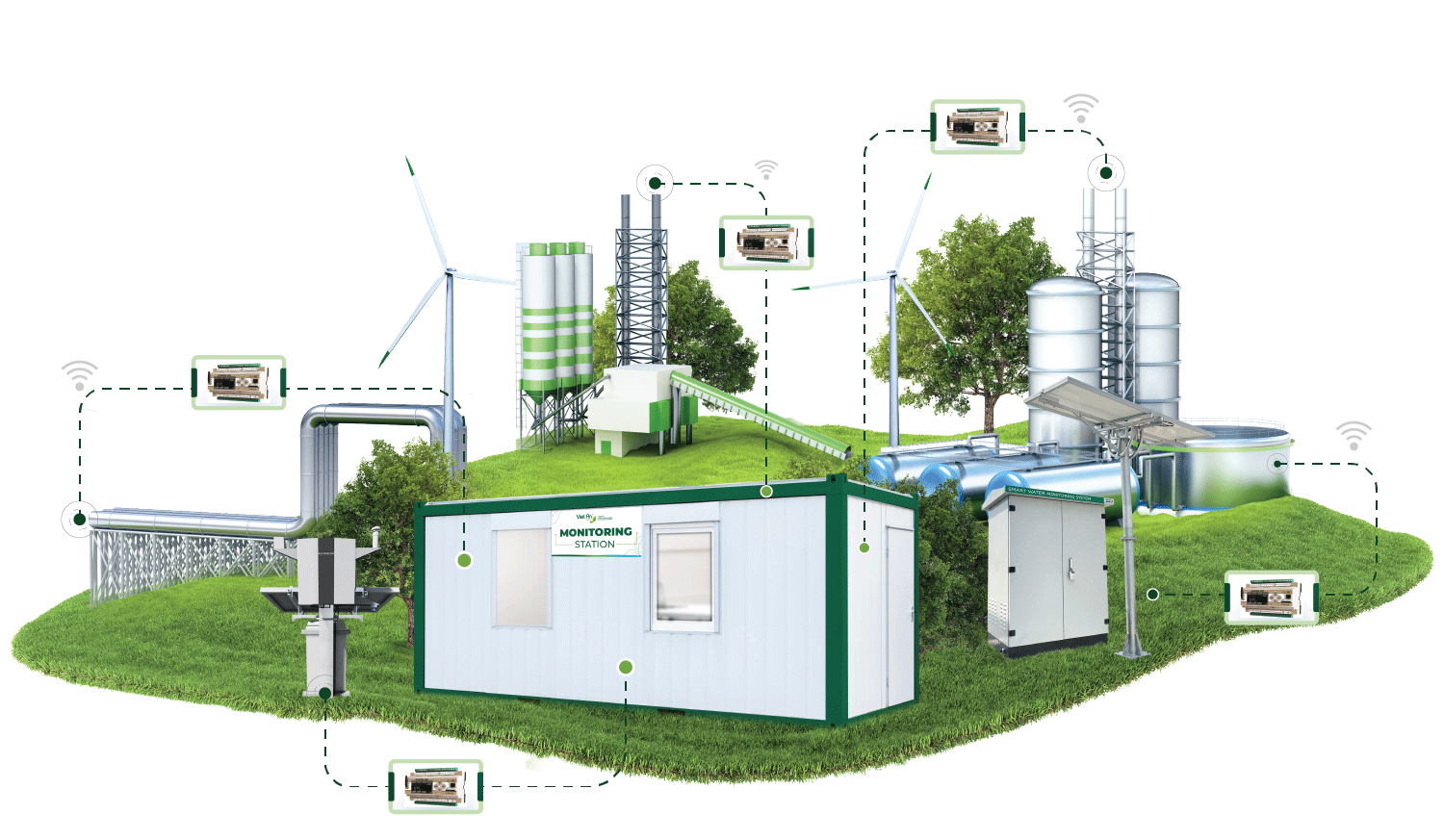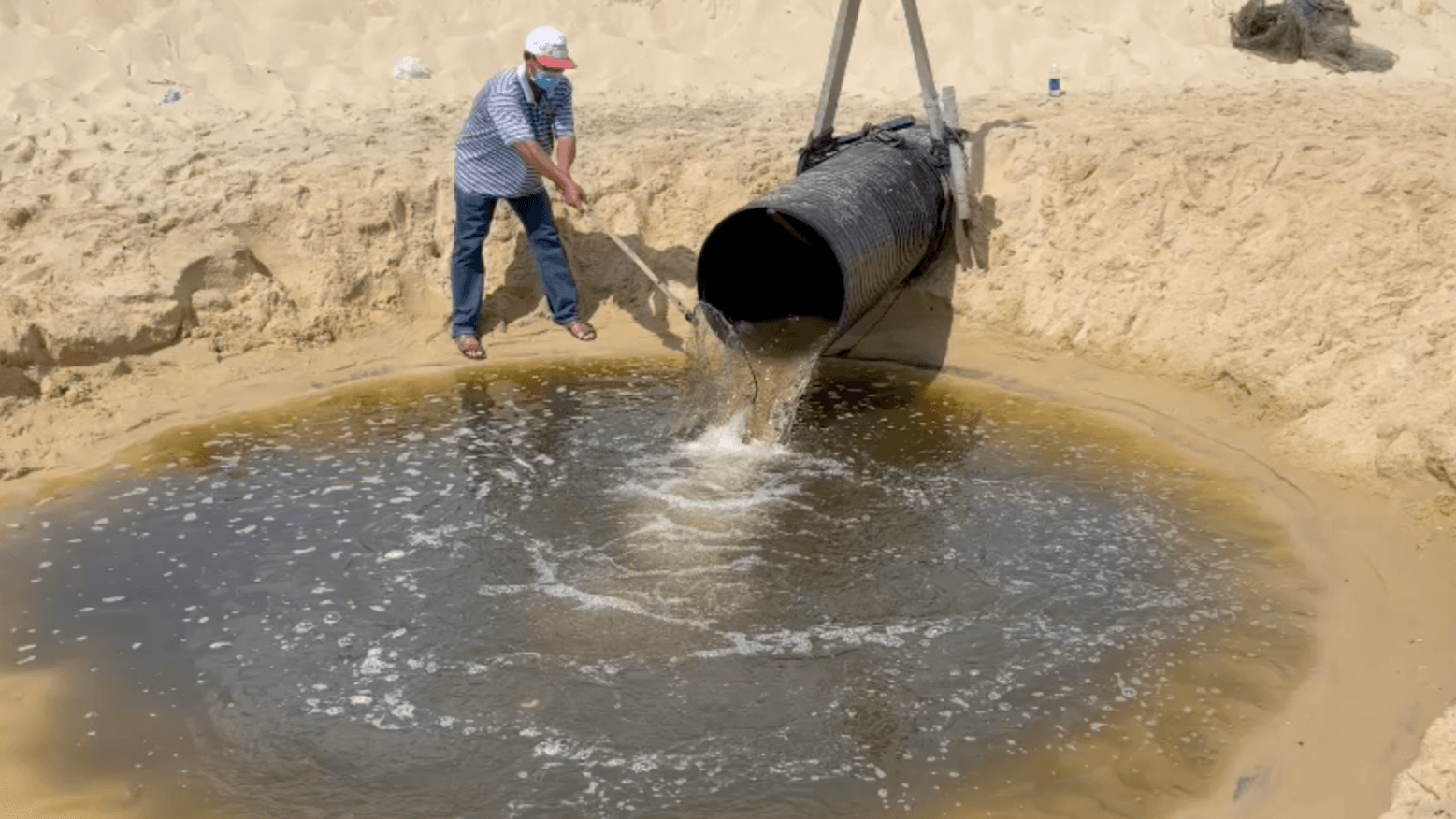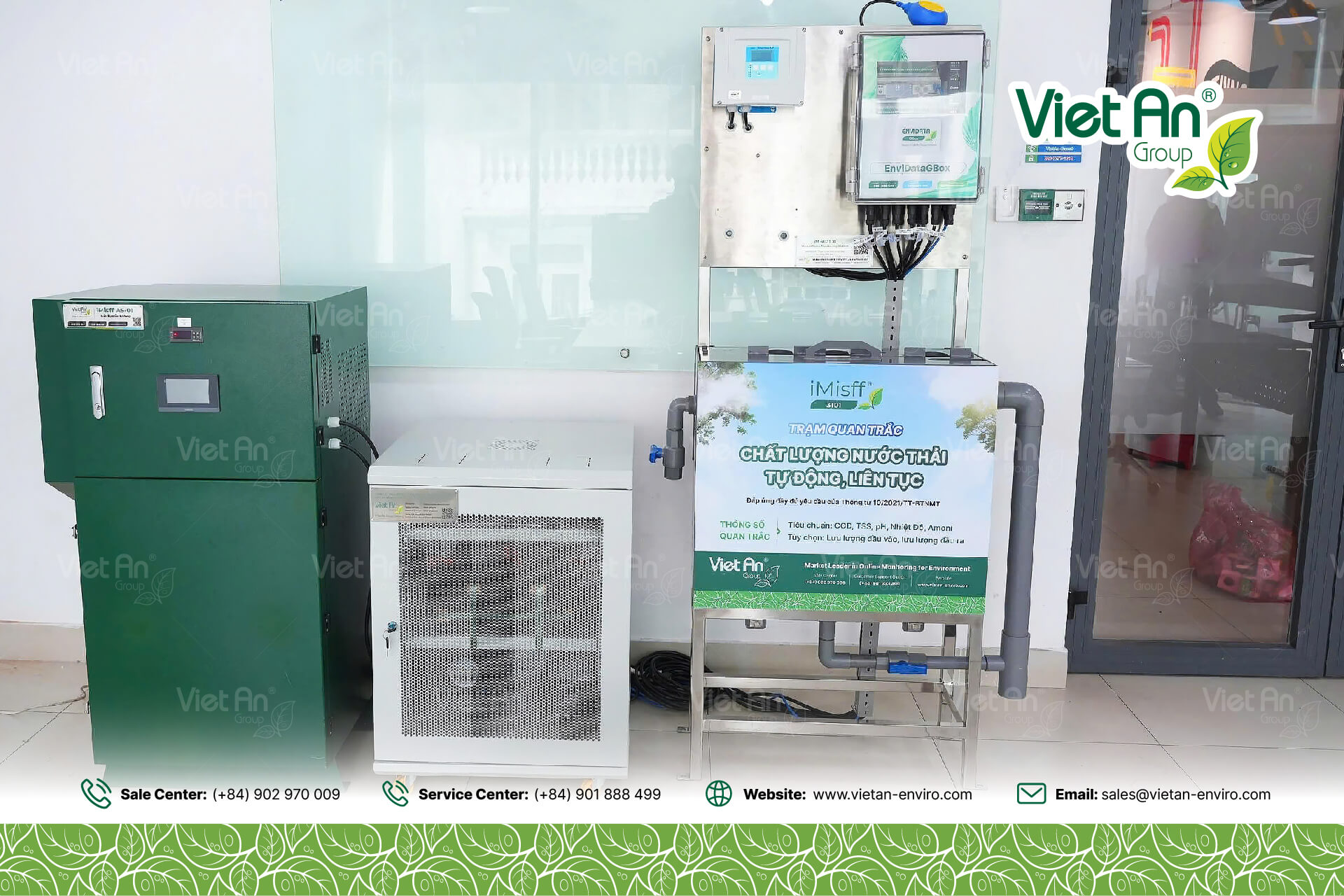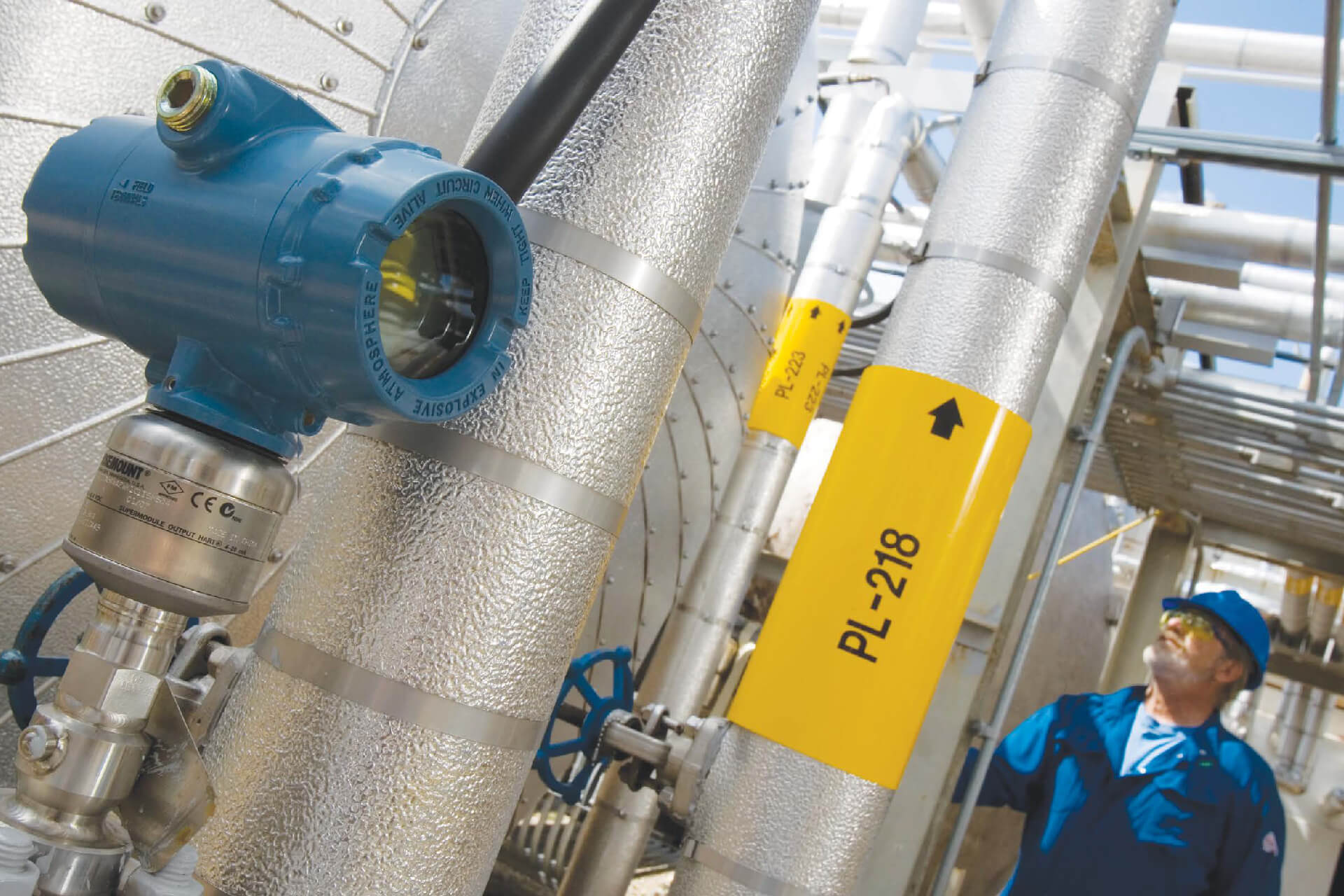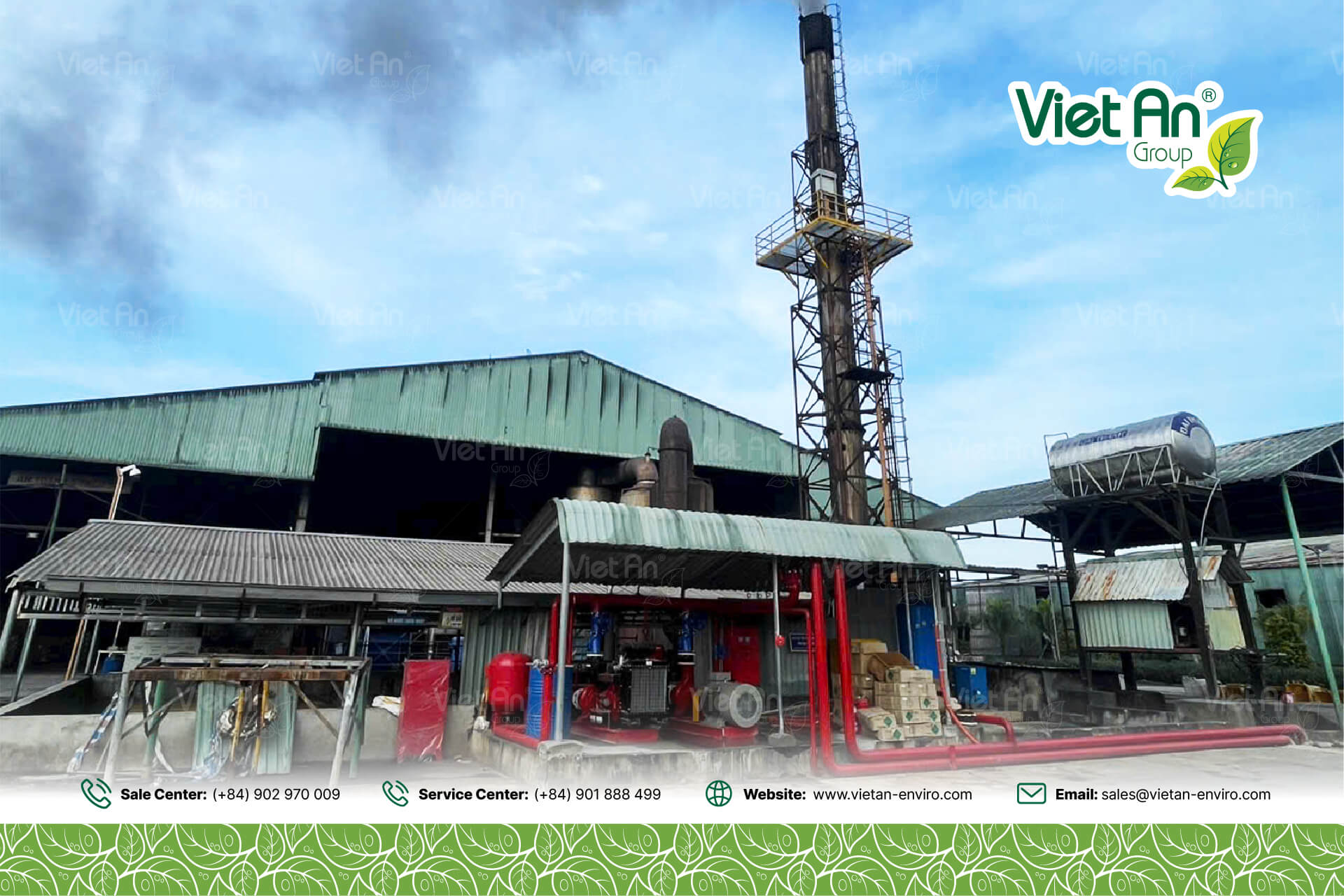Anaerobic tanks are one of the crucial solutions in wastewater treatment, with the ability to remove organic matter and produce methane gas. This technology not only helps minimize environmental pollution but also optimizes energy efficiency, contributing positively to wastewater monitoring and sustainable environmental management.
What is an Anaerobic Tank in Wastewater Treatment?
An anaerobic tank, also known as an UASB (Upflow Anaerobic Sludge Blanket) tank, is a wastewater treatment system using anaerobic methods (without oxygen). In the tank, anaerobic microorganisms thrive and utilize the oxygen present in organic matter to decompose it, thereby reducing the concentration of pollutants.
The UASB tank is particularly effective in treating wastewater with high concentrations of organic pollution and low solids content. The tank's design includes inclined baffles to separate gas from wastewater while producing methane gas – a valuable renewable energy source.

The Role of Anaerobic Microorganisms in Wastewater Treatment
Anaerobic microorganisms play a central role in the decomposition of organic matter in wastewater. These microorganisms help reduce the concentrations of pollutants such as BOD (Biochemical Oxygen Demand) and COD (Chemical Oxygen Demand) while producing methane gas. They can also function effectively in harsh conditions, maintaining treatment efficiency in systems with high pollutant concentrations. Below are the key roles of anaerobic microorganisms in this field:
- Decomposition of Organic Matter: Anaerobic microorganisms decompose organic substances in wastewater, transforming them into simpler products such as methane and carbon dioxide. This process reduces BOD and COD, improving water quality.
- Environmental Adaptability: They can operate effectively in harsh conditions where oxygen is toxic. This makes anaerobic microorganisms an ideal choice for wastewater treatment systems with high pollutant concentrations.
- Energy Generation: The anaerobic decomposition process produces methane gas, which can be recovered and used as a renewable energy source, contributing to lower energy costs for wastewater treatment facilities.
- Nutrient Recycling: Anaerobic microorganisms not only minimize pollution but also recycle nutrients, enhancing the growth capacity of natural ecosystems.
- Participation in Multi-stage Treatment Systems: In complex wastewater treatment processes, anaerobic microorganisms are often combined with aerobic microorganisms, resulting in optimal efficiency in wastewater treatment.
- Tolerance to Toxic Elements: Anaerobic microorganisms can survive and function in environments containing toxic substances, helping maintain treatment performance even under unfavorable conditions.
Thanks to these outstanding characteristics, anaerobic microorganisms contribute not only to the effective treatment of wastewater using anaerobic tanks but also help protect the environment, meeting regulatory standards for treated water quality.

Typical Types of Anaerobic Tanks in Wastewater Treatment
Below are some common types of anaerobic tanks often applied in wastewater treatment systems. Each type has a distinct structure and operating principle, aimed at optimizing the decomposition of pollutants and enhancing treatment efficiency to meet specific treatment requirements.
- UASB Tank (Upflow Anaerobic Sludge Blanket): The UASB tank allows wastewater to flow through an anaerobic sludge blanket, decomposing pollutants and producing methane gas. The tank's design optimizes the treatment process with a three-phase separation system that efficiently separates water, sludge, and gas.
- ABR Tank (Anaerobic Baffled Reactor): This system has multiple compartments for wastewater to flow through, with different anaerobic microorganisms in each compartment, optimizing the decomposition process.
- EGSB Tank (Expanded Granular Sludge Bed): An advanced version of the UASB tank, the EGSB tank can handle wastewater at high flow rates, keeping sludge suspended to increase treatment efficiency.
- IC Tank (Internal Circulation): The internal circulation anaerobic tank combines two UASB systems, enhancing treatment efficiency while saving space.
Structure of UASB Anaerobic Tank
The UASB anaerobic tank (Upflow Anaerobic Sludge Blanket) is a wastewater treatment system designed simply, usually rectangular or cylindrical, made of reinforced concrete. The main components of the tank include:
- Wastewater Inlet System: Wastewater is introduced from the bottom of the tank through a distribution system, ensuring uniform dispersion.
- Treatment Layer: The area where microbial reactions occur, with suspended anaerobic sludge playing a crucial role in decomposing pollutants.
- Phase Separation System: Comprising inclined baffles that help separate gas, water, and sludge after the treatment process, minimizing residual gas in the wastewater.
Operational Principles of UASB Anaerobic Tank

The UASB anaerobic tank operates based on the principle of using anaerobic microorganisms to treat wastewater through three main stages:
- Hydrolysis: High molecular weight compounds in wastewater are broken down into simpler substances by enzymes secreted by microorganisms. This process generates soluble substances and intermediate products necessary for subsequent reactions.
- Fermentation: The products obtained from the hydrolysis process are converted into compounds such as fatty acids and CO2. This stage facilitates the growth of acidogenic microorganisms.
- Methanogenesis: In the final stage, methanogenic microorganisms convert the products from the previous stage into methane gas (CH4) and CO2. Typical reactions include:
CH3COOH → CH4 + CO2
CO2 + 4H2 → CH4 + 2H2O
Advantages of UASB Anaerobic Tanks
- Anaerobic tanks do not require oxygen supply, saving energy and reducing operating costs.
- The sludge produced in UASB tanks is significantly lower than in aerobic tanks, reducing the burden of sludge treatment.
- The anaerobic process generates methane (CH₄), a clean energy source that can be recovered and utilized.
- UASB tanks can effectively treat wastewater with high organic content that other systems may not accommodate.
- UASB tanks are suitable for various types of wastewater, from industrial to domestic.
- The system can achieve COD treatment efficiencies of up to 80%, surpassing many other methods.
- Anaerobic microorganisms require fewer nutrients (such as nitrogen and phosphorus), helping to lower costs in the treatment process.
- The tank can operate intermittently due to the long-term viability of anaerobic microorganisms without compromising treatment efficiency.
- Anaerobic tanks have low construction and operational costs, while also withstanding high loads, helping to save initial investment costs.
Disadvantages of UASB Anaerobic Tanks
- The start-up process for anaerobic tanks takes a long time due to the slow growth of anaerobic microorganisms, delaying initial treatment efficiency.
- UASB tanks are ineffective for wastewater with low organic content, limiting their application in certain cases.
- Operating conditions (temperature, pH, load) need to be closely monitored to ensure performance, requiring in-depth management.
- The anaerobic process produces H₂S (hydrogen sulfide) gas, which has an unpleasant odor and can negatively impact the environment if not properly treated.
- Anaerobic tanks do not effectively treat nutrients like nitrogen and phosphorus, necessitating the combination with supplementary treatment methods for better results.
Conclusion
Anaerobic tanks are not only an effective wastewater treatment method but also play a significant role in environmental monitoring, helping to control and minimize pollution. With their ability to treat wastewater with high organic content, produce methane gas, and save energy, anaerobic tanks are increasingly applied across various industries and environmental services.
